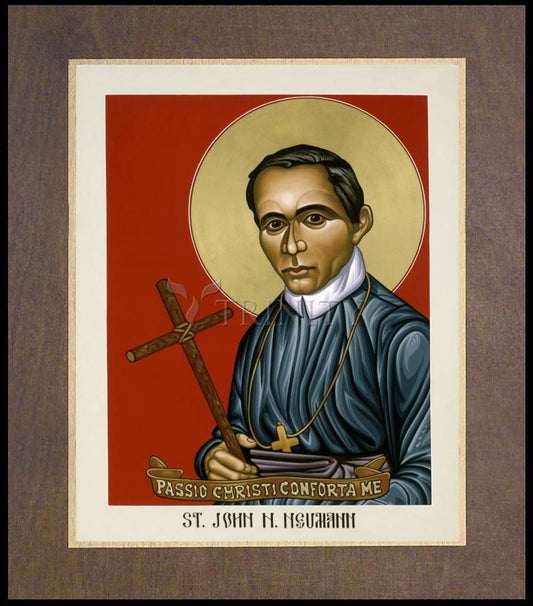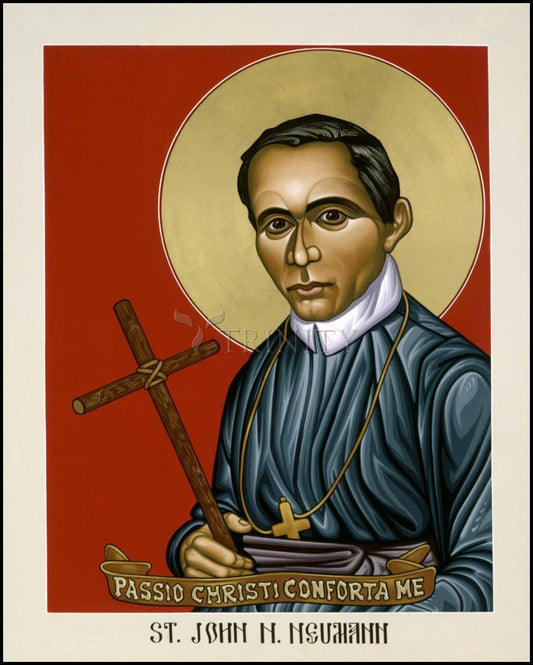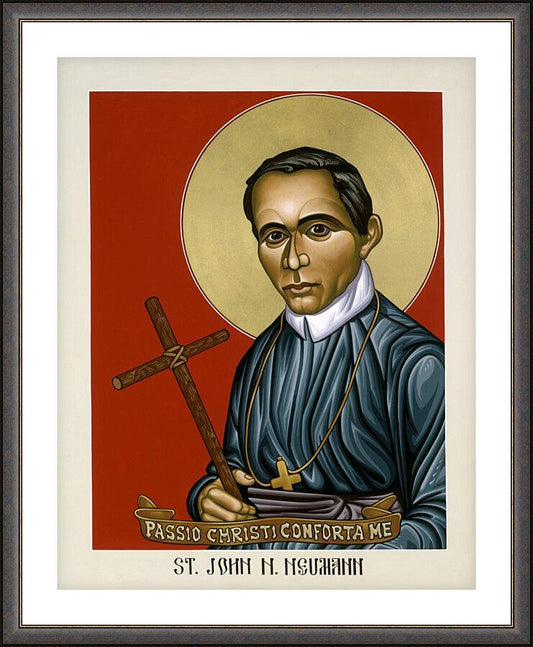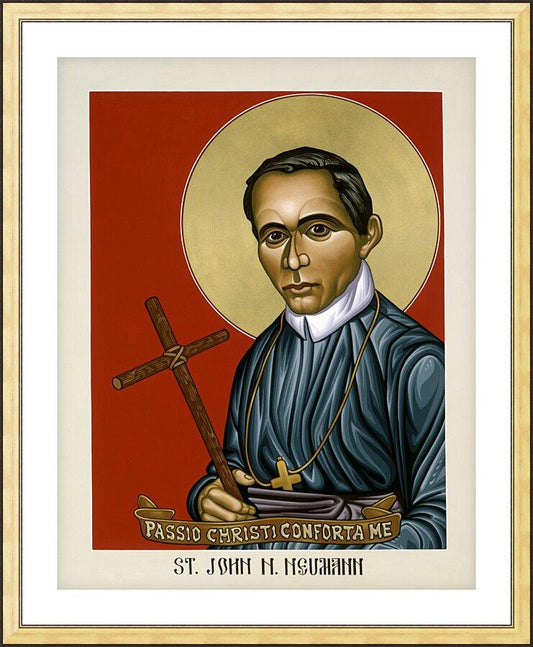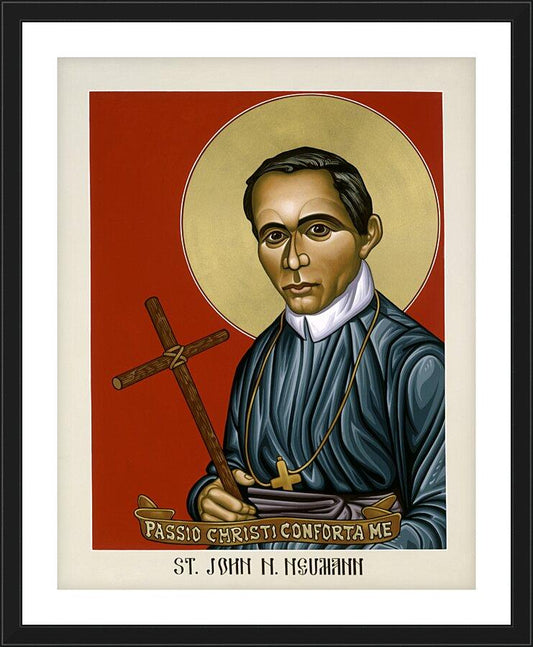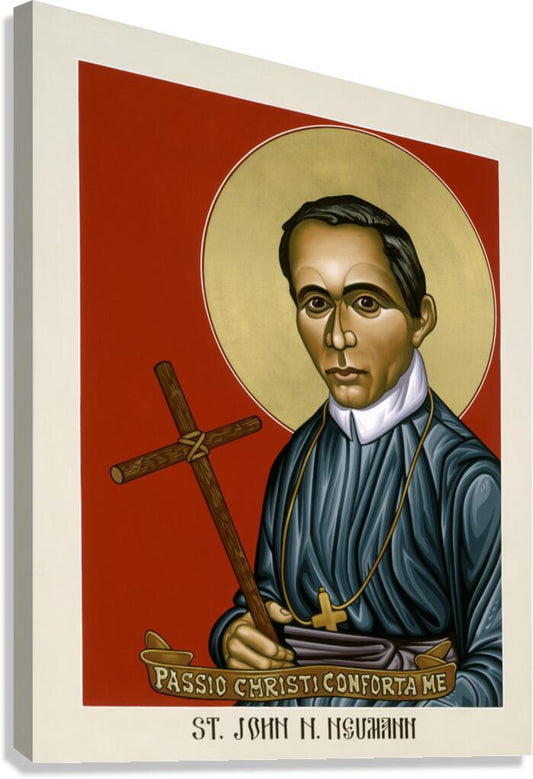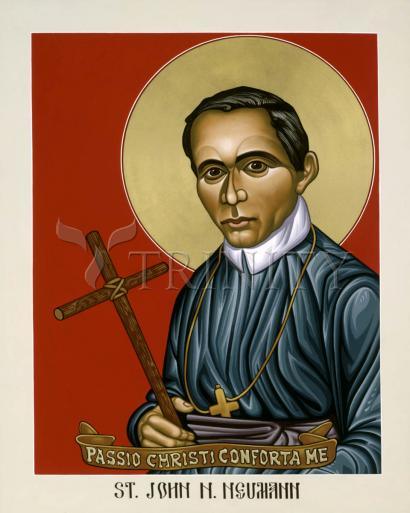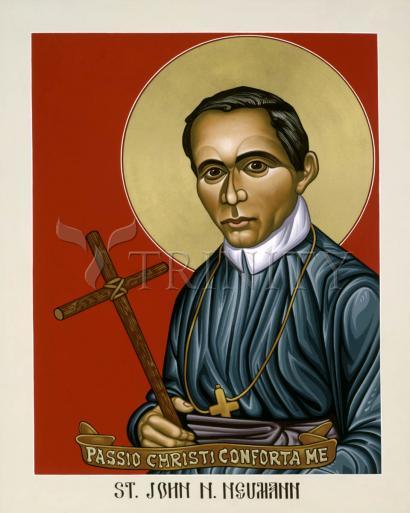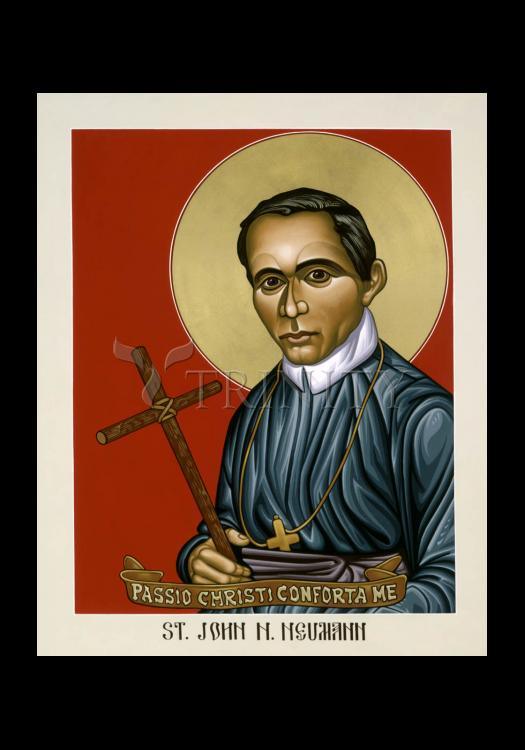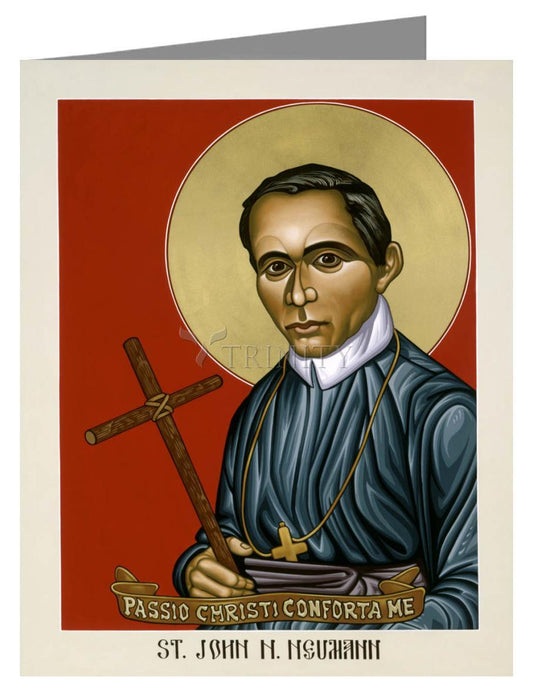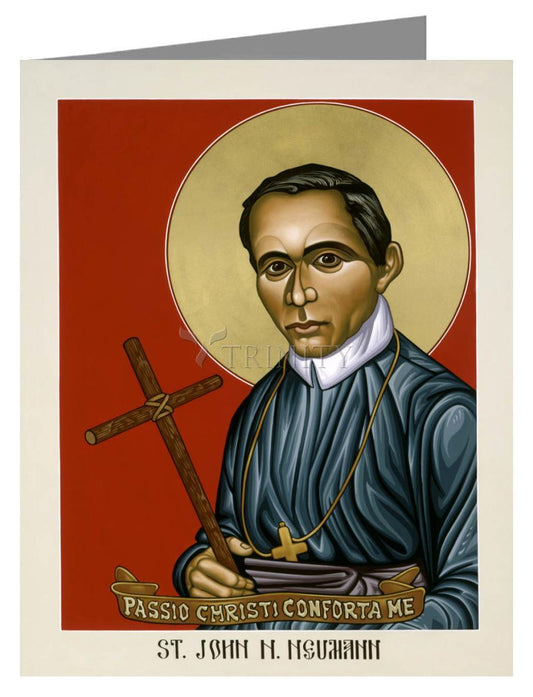John was the son of Philip, who was German and owned a stocking factory, and Agnes Neumann who was Czech. John was a small and quiet boy with four sisters and a brother, and was named after St. John Nepomucene. An excellent student, John early felt drawn to religious life. He was a seminarian at Budweis, Bohemia in 1813, he studied astronomy and botany in addition to theological topics. John studied theology at Charles Ferdinand University at Prague in 1833.
When time came for his ordination, the bishop was sick and the date was never reset because Bohemia had an over-abundance of priests. John decided to go to America to ask for ordination and work with emigres. He walked most of the way to France, then took a ship for America.
John arrived unannounced in Manhattan in 1836. Bishop John Dubois was happy to see him as there were 36 priests for the 200,000 Catholics in New York and New Jersey. John was ordained on 28 June 1836, and sent to Buffalo. There the parish priest, Father Pax, gave him the choice of the city of Buffalo or of the rural area. John chose the more difficult country area. He stayed in a small town with an unfinished church, and when it was completed, he moved to a town with a log church. There he built himself a small log cabin, rarely lit a fire, slept little, often lived on bread and water, and walked miles to visit farm after remote farm. John's parishioners were from many lands and tongues, but John knew twelve languages, and worked with them all.
John joined the Redemptorists at Pittsburgh, Pennsylvania in 1840, taking his vows at Baltimore, Maryland in 1841, the first Redemptorist to do so in the United States. He was a home missionary in Maryland, Ohio, Pennsylvania, and Virginia and a Rector of St. Philomena church in Pittsburgh in 1844. John was Vice-regent and superior of the Redemptorists in America in 1847 and Bishop of Philadelphia in 1852.
He built fifty churches and began building a cathedral. John opened almost one hundred schools, and the number of parochial school students in his diocese grew from 500 to 9,000. He wrote newspaper articles, two catechisms, and many works in German. First American man and first American bishop to be canonized.
Born: March 28, 1811 at Prachititz, Bohemia (Czech Republic)
Died: January 5, 1860 of a stroke at 13th and Vine Streets, Philadephia, Pennsylvania, USA
Beatified: October 13, 1963 at Rome, Italy
Canonized: June 19, 1977 by Pope Paul VI
Readings:
Since every man of whatever race is endowed with the dignity of a person, he has an inalienable right to an education corresponding to his proper destiny and suited to his native talents, his cultural background, and his ancestral heritage. At the same time, this education should pave the way to brotherly association with other peoples, so that genuine unity and peace on earth may be promoted. For a true education aims at the formation of the human person with respect to the good of those societies of which, as a man, he is a member, and in whose responsibilities, as an adult, he will share.
"Saint John Neumann
A man must always be ready, for death comes when and where God wills it.
"Saint John Neumann



